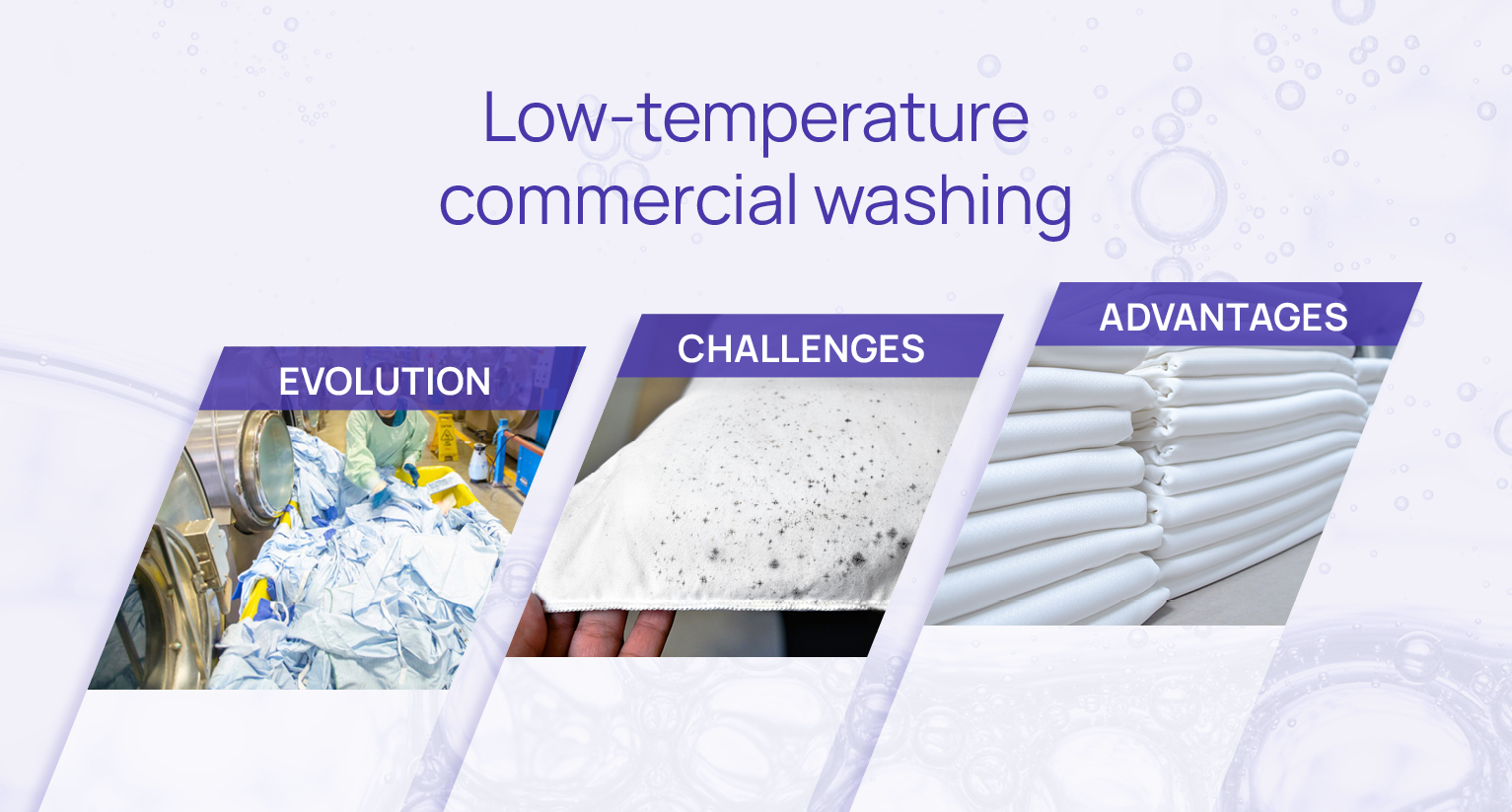The landscape of commercial laundry practices has undergone a transformative shift in recent years, with a marked trend towards cost savings.

One path has been the adoption of low temperature washing methods. This article delves into the history, advantages, and pertinent challenges associated with the shift towards eco-friendly low temperature laundering in commercial settings.
Historical context
Traditional commercial laundry procedures have conventionally relied on elevated temperatures to ensure effective stain removal, disinfection, and compliance to standards. However, the turn of the century saw an increased awareness of environmental concerns and a growing need to reduce energy consumption due to the continual increase in energy costs. Researchers and chemical providers began exploring alternatives, leading to the conceptualisation and experimentation with low temperature washing solutions around the early 2000s. These solutions are not exclusive to one or two suppliers;, all manufacturers can produce these alternatives, some with two- or three-staged approaches, while others offer a single proven chemical mix.
Pros
Energy efficiency and cost savings
Low-temperature washing stands out prominently for its energy efficiency. Operating at lower temperatures translates to reduced energy consumption, thereby lowering operational costs for commercial laundry facilities over time.
Environmental impact mitigation
By reducing energy use, washing at a lower temperature directly contributes to environmental sustainability. It aligns seamlessly with global initiatives and other resource- saving areas, such as water reclamation and solar power, aiming to decrease the carbon footprint and promote ecologically responsible practices.
Fabric preservation and colour retention
Another advantage is the minimisation of premature linen degradation as the lower temperature is gentler on the fabric. This in turn extends the lifespan of textiles, reducing the need for constant replacement and the need for condemned items to be sent to landfill. While there are a few programs where these textiles are recycled, this is not the normal process. Additionally, the process aids in preserving the vibrancy of colours and overall look and feel of the items, a crucial factor for industries where aesthetics play a significant role.
Compatibility with modern detergents
The synergy between low-temperature washing and advancements in detergent formulations is a critical factor in its success. Modern detergents are engineered to perform optimally at lower temperatures, providing effective cleaning while minimising environmental impact.
Consumer appeal
With an increasing focus on sustainable practices, low temperature washing aligns with consumer expectations, enhancing the brand image of businesses that adopt these eco-friendly practices.
Cons
Dependence on detergent quality and cleaning efficiency challenges
Despite advancements, there are still challenges in achieving the same level of cleaning effectiveness as traditional high temperature washing, particularly for heavily soiled items or fabrics with tough stains. The success of low-temperature washing is contingent on the quality and efficacy of modern detergents. Some facilities may find themselves limited in detergent choices, potentially impacting overall washing performance.
Bacterial concerns
In industries where stringent hygiene standards are paramount, such as healthcare and food services, there may be concerns about bacteria lingering on the linen with low-temperature washing, especially if the chemicals are not getting to the wash in sufficient quantities. Without continuous flow monitoring and recording of those amounts, by the time you are aware of issues it may be too late.
Extended dry times and increased ironer temperatures
Items washed at low temperatures will leave the tunnel or washer much cooler (especially during winter), than washing conventionally. , This can require extended dry times and, in some cases, increased temperature to achieve comparable finishing. This prolonged dry time or temperature increase can often negate any saving and negatively impact operational efficiency, especially in facilities with high throughput.
A future of innovation and efficiency
The ongoing evolution of low-temperature commercial washing signifies a commendable stride towards sustainable laundry practices. While challenges persist, the continuous innovation in detergent technology and washing machine efficiency is likely to address these concerns. This is why an individual approach to site specifications needs to be taken into consideration. This is certainly not a “one size fits all” exercise and why JayChem can help businesses make an informed decision based around water quality, energy costs, and productivity, allowing them to carefully weigh up the advantages and drawbacks. The trajectory towards environmentally conscious and economically viable laundering practices continues to shape the future of the commercial laundry industry.
There are new and exciting products being developed and tested every day and quite possibly the “magic bullet” we all search for may be closer than we think.
